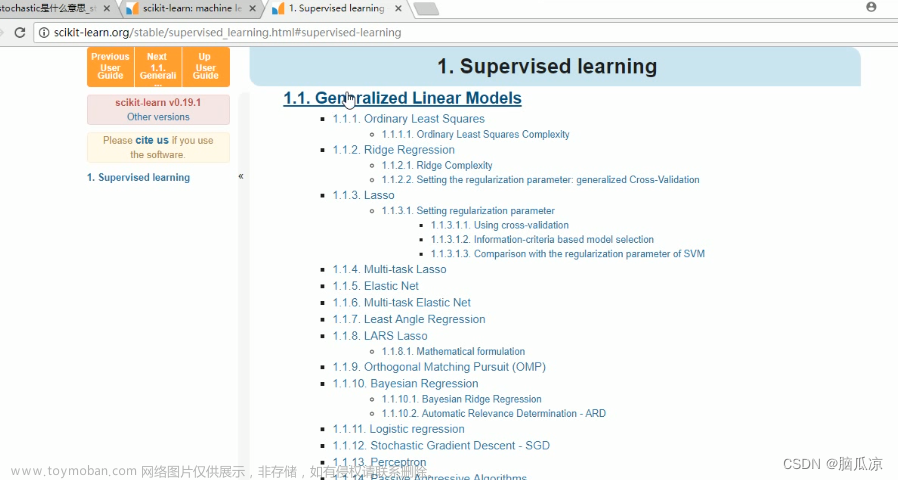伴侣矩阵求解多项式的根
已知方程 P ( x ) = ∑ i = 0 n a i x n = 0 P(x) = \sum_{i=0}^{n}a_ix^n = 0 P(x)=∑i=0naixn=0,通过伴侣矩阵求解该方程的根。
伴侣矩阵
此处参考百度知道,就可以大概知道伴侣矩阵的构建。具体如下,
设
f
(
t
)
=
t
n
+
a
1
t
n
−
1
+
…
+
a
n
−
1
t
+
a
n
.
f(t)=t^n+a_1 t^{n-1}+\ldots+a_{n-1} t+a_n .
f(t)=tn+a1tn−1+…+an−1t+an.
是数域
F
F
F 上的首项为 1 的多项式, 则
n
n
n 阶矩阵:
C
=
[
0
0
…
0
−
a
n
1
0
…
0
−
a
n
−
1
0
1
…
0
−
a
n
−
2
⋮
⋮
⋮
⋮
0
0
…
1
−
a
1
]
C=\left[\begin{array}{ccccc} 0 & 0 & \ldots & 0 & -a_n \\ 1 & 0 & \ldots & 0 & -a_{n-1} \\ 0 & 1 & \ldots & 0 & -a_{n-2} \\ \vdots & \vdots & & \vdots & \vdots \\ 0 & 0 & \ldots & 1 & -a_1 \end{array}\right]
C=
010⋮0001⋮0…………000⋮1−an−an−1−an−2⋮−a1
对于原来的多项式
a
0
a_0
a0系数可能不为1,那就可以通过左右两边同时除以
a
0
a_0
a0得到首项系数为1的多项式。
求解示例
假设我们有一个多项式如下。
P
(
x
)
=
a
0
x
3
+
a
1
x
2
+
a
2
x
+
a
3
=
0
P(x)=a_0 x^3+a_1 x^2+a_2 x+a_3=0
P(x)=a0x3+a1x2+a2x+a3=0
令
b
1
=
a
1
a
0
b_1 = \frac{a_1}{a_0}
b1=a0a1,
b
2
=
a
2
a
0
b_2 = \frac{a_2}{a_0}
b2=a0a2…依此类推,就得到了如下
P
′
(
x
)
=
x
3
+
b
1
x
2
+
b
2
x
+
b
3
=
0
P'(x)=x^3+b_1 x^2+b_2 x+b_3=0
P′(x)=x3+b1x2+b2x+b3=0
此时
P
′
P'
P′和
P
P
P的根是相同。构建伴侣矩阵A:
A
=
[
0
0
−
b
3
1
0
−
b
2
0
1
−
b
1
]
A = \left[\begin{array}{lll} 0 & 0 & -b_3 \\ 1 & 0 & -b_2 \\ 0 & 1 & -b_1 \end{array}\right]
A=
010001−b3−b2−b1
为了便于观察,可以将A先进行转置,此时的特征根和特征方程是不会发生改变的。
令,
A = [ − b 1 − b 2 − b 3 1 0 0 0 1 0 ] A = \left[\begin{array}{ccc} -b_1 &- b_2 & -b_3 \\ 1 & 0 & 0 \\ 0 & 1 & 0 \end{array}\right] A= −b110−b201−b300
然后就求解该矩阵的特征值和特征向量,由定义得,
A
y
=
λ
y
A\bold{y} = \lambda \bold{y}
Ay=λy
我们可以假设此时多项式
P
(
x
)
P(x)
P(x)的根
x
0
x_0
x0就是矩阵 A阵的特征值,因此有
A
y
=
x
0
y
A \mathbf{y}=x_0 \mathbf{y}
Ay=x0y
然后,令
y
=
[
x
0
2
,
x
0
,
1
]
T
\mathbf{y}=\left[x_0^2, x_0, 1\right]^T
y=[x02,x0,1]T,就可以得到,
A
y
=
[
−
b
1
x
0
2
−
b
2
x
0
−
b
3
x
0
2
x
0
]
=
[
x
0
3
x
0
2
x
0
]
=
x
0
y
A\mathbf{y} = \left[\begin{array}{ccc} -b_1x_0^2 -b_2x_0 -b_3 \\ x_0^2 \\ x_0 \end{array}\right] = \left[\begin{array}{c}x_0^3 \\ x_0^2 \\ x_0\end{array}\right] = x_0\mathbf{y}
Ay=
−b1x02−b2x0−b3x02x0
=
x03x02x0
=x0y
此时第一行就得到了我们所需要求解的方程了。
− b 1 x 0 2 − b 2 x 0 − b 3 = x 0 3 -b_1x_0^2 - b_2x_0-b_3 = x_0^3 −b1x02−b2x0−b3=x03
所以只需要解出伴侣矩阵A的所有特征根 x 0 x_0 x0就可以求出原来方程的根了。
参考文档: 传送门文章来源:https://www.toymoban.com/news/detail-831984.html
然后让GPT随机给我生成了一个示例的代码,可以验证一下,文章来源地址https://www.toymoban.com/news/detail-831984.html
import numpy as np
import sympy as sp
import matplotlib.pyplot as plt
# 定义三次方程的系数
coefficients = [1, -6, 11, -6]
# 构建友矩阵
A = [[-coefficients[1], -coefficients[2], -coefficients[3]],
[1, 0, 0],
[0, 1, 0]]
A = np.array(A)
# 输出友矩阵
print("Companion Matrix A:")
print(A)
# 求解特征值
eigenvalues = np.linalg.eigvals(A)
# 输出结果
print("\nCoefficients of the cubic equation:", coefficients)
print("Eigenvalues of the companion matrix:", eigenvalues)
# 求解方程的准确根
# Define the symbolic variable x
x = sp.symbols('x')
# Define the cubic equation
equation = x**3 - 6*x**2 + 11*x - 6
# Solve the cubic equation
roots = sp.solve(equation, x)
# Display the roots
print("\nExact roots of the cubic equation:", roots)
# Plot the cubic equation
def cubic_equation(x):
return x**3 - 6*x**2 + 11*x - 6
x_values = np.linspace(0, 4, 400)
y_values = cubic_equation(x_values)
plt.plot(x_values, y_values, label='y = $x^3 - 6x^2 + 11x - 6$')
plt.axhline(0, color='black', linewidth=0.5, linestyle='--', label='y = 0')
plt.scatter(roots, [0, 0, 0], color='black', marker='o', label='Roots')
plt.xlabel('x')
plt.ylabel('y')
plt.title('Plot of the Cubic Equation')
plt.legend()
plt.grid(True)
plt.show()
到了这里,关于伴侣矩阵求解多项式的根的文章就介绍完了。如果您还想了解更多内容,请在右上角搜索TOY模板网以前的文章或继续浏览下面的相关文章,希望大家以后多多支持TOY模板网!









